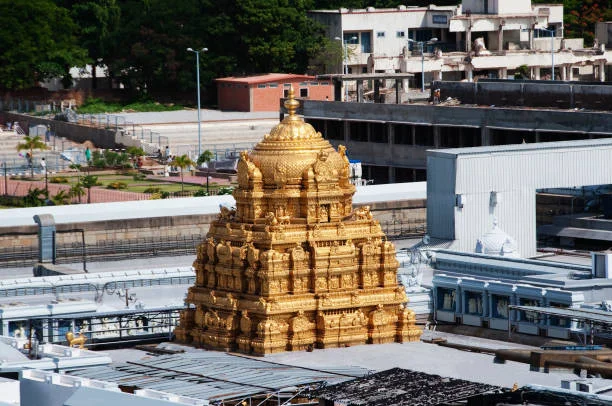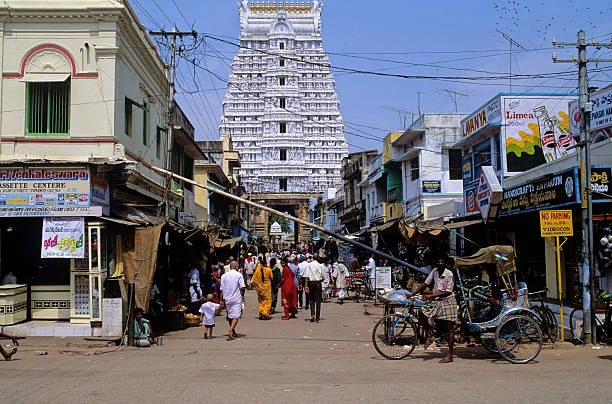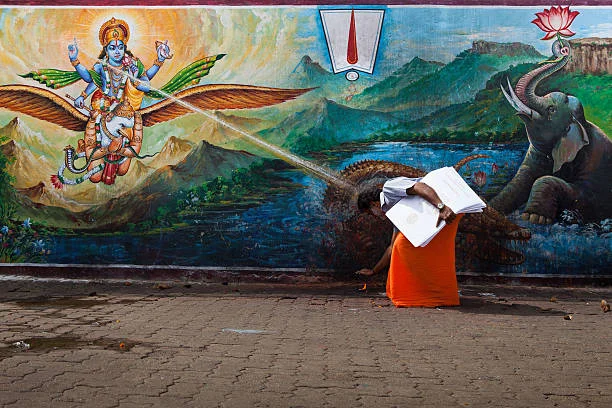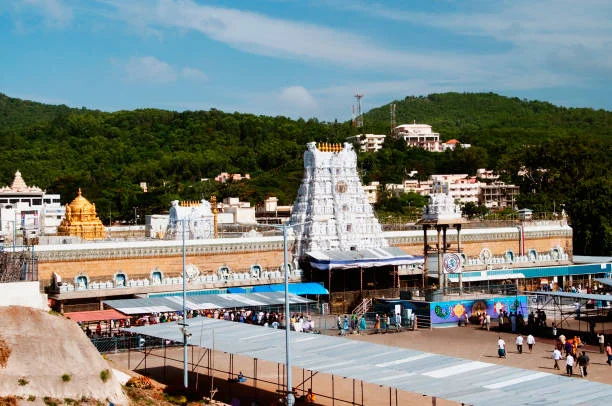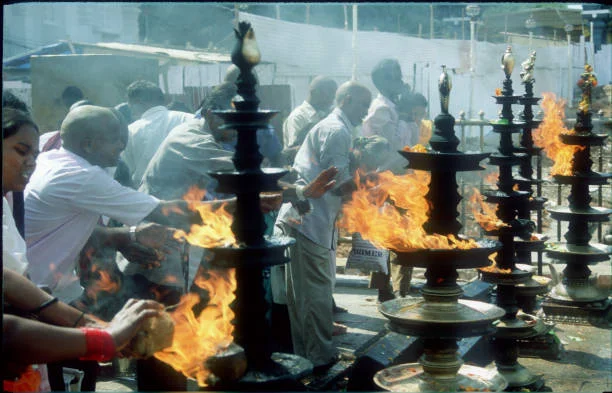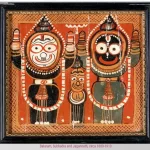Tirupati (Tirupati Balaji Maharaj) is a city of Andhra Pradesh state. It is the regulatory base camp of the Tirupati area. The city is domestic to the vital Hindu holy place of Tirumala Venkateshwara Sanctuary and other notable sanctuaries. It is found at a remove of 150 km from Chennai, 250 km from Bangalore, 406 km from Amaravati. Also is one of the eight Self-Manifested Sanctuaries dedicated to Vishnu.
It is a civil business that serves as the central command for Tirupati (urban) mandal, Tirupati (provincial) mandal, and Tirupati income division.
Tirupati (Tirupati Balaji Maharaj)
The word Tirupati is a combination of two words:
Tiru which means sacred or honourable or goddess shree lakshmi.
Pati which means abode or husband or residence.
Tirupati (Tirumala) which referred to the Pushpa-mandapa in Acharya-Hridayam in the 13th century.
Mythology
According to the Varaha Purana, after returning from Lankapuri during the Treta Yuga period Rama, Sita and Lakshmana were lived here. According to the Purana, Balaji borrowed a loan of one crore and 11.4 million gold coins from Kubera for his marriage to Padmavathi. To repay the loan, devotees from all across India come to the temple and contribute money.
Ancient history
Pallava Kings constructed Tirupati beginning in the sixth century.During Ramanujacharya’s reign in the 11th century, the city became into a major Vaishnava hub from which Srivaishnavism spread across Andhra Desa. Srikurmam Temple in Andhra Pradesh’s Srikakulam district features the inscription Tirupati Srivaishnavula Raksha. Tirupati escaped Muslim invasions by agreeing to pay Jizya to the Muslims. During the early 1300s Muslim invasion of South India, the idol from Sri Ranganathaswamy Temple in Srirangam was transferred to Tirupati for security. (Tirupati Balaji Maharaj)
For the majority of the mediaeval era, the temple town was part of the Vijayanagara Empire until the 17th century, and its kings, including Krishna Deva Raya and Achyuta Deva Raya, Sadasiva Raya, and Tirumala Deva Raya, provided significant resources and riches.
The city contains several old temples, notably the Venkateshvara Temple, which has 1,150 inscriptions in Sanskrit, Tamil, Telugu, and Kannada. Out of 1150 inscriptions, 236 belong to the Pallava, Chola, and Pandya kingdoms, 169 to the Saluva dynasty, 251 to the Achyuta Deva Raya period, 130 to the Sadasiva Raya period, and another 135 to the Aravidu dynasty.
Unsolved Believes
- Mystical Hair of Lord Venkateswara: The idol of Lord Venkateswara is adorned with real hair, which is believed to never tangle. Devotees consider it a miraculous phenomenon and attribute it to the divine nature of the deity.
- Self-manifested Idol: The idol of Lord Venkateswara is considered Swayambhu, meaning it is self-manifested and not man-made. This enhances the spiritual significance of the temple.
- Perpetually Moist Back: Despite rigorous cleaning and the dry climate, the back of the Lord’s idol remains perpetually moist. This mystery is part of the temple’s many divine attributes.
- Ever-burning Lamps: The lamps lit in front of the deity have been burning continuously since the time the temple was built. They are never extinguished, symbolizing eternal light and divinity.
- Non-decomposing Flowers: The flowers offered to the deity do not wilt or decompose easily. They remain fresh for much longer than usual, adding to the temple’s mystical aura.
- Invisible Abhishekam: During the abhishekam (ritual bath), a peculiar incident occurs where the Lord’s idol appears dry immediately after the ritual, despite being bathed in various liquids.
- Sweat on the Idol: It is said that the idol sometimes displays droplets of sweat, even in the cool stone sanctum, suggesting that the deity is alive and present.
- Limited Darshan Time: Each devotee gets only a few seconds to have darshan (view) of the Lord. Despite the brief period, many devotees report a profound spiritual experience during these moments.
- Mystery of the Bangaru Vakili: They always keep the gold-plated door, called Bangaru Vakili, closed except during specific rituals. People believe that celestial beings perform services to the deity beyond these doors.
- Musical Pillars: The temple has musical pillars that emit different musical notes when struck. These pillars are a testament to the architectural and acoustic brilliance of the temple’s construction.
Kings and kingdoms
These mostly describe the contributions of the Pallava Kingdom about the ninth century CE, the Chola Kingdom around the tenth century CE, and the Vijayanagara Empire around the fourteenth century CE. Tallapaka Annamacharya composed several Telugu hymns in celebration of the holy place in the 15th century. He described it as divine, with rocks, streams, trees, and animals, and added that it is heaven on Earth. One example of such a song is:
Kattedura Vaikuntamu Kaanachaina Konda
Thettalaya Mahimale Tirumala Konda ||
Vedamulae Silalai Velasinadi Konda
Yedesa Punya Rasule Yerulainadi Konda
Gadili Brahmadi Lokamula Konalu Konda
Sree Devudundeti Seshadri Konda ||
There was no human settlement in Lower Tirupati till 1500. With the expanding prominence of upper Tirupati, a village called “kotturu” emerged along the present-day Kapilatheertham Road. They eventually moved it to the area of the Govindarajaswamy Temple, which was dedicated in 1130 CE. Later, the community expanded into its current shape around the Govindaraja Swamy Temple, which serves as the city’s core. It has become very famous as a tourist destination.
Modern History
The TTD Act of 1932 transferred the Tirumala Venkateswara Temple to Tirumala Tirupati Devasthanams. Tirupati Urban growth Authority (TUDA) and TTD collaborated to organise “Tirupati Utsavam” in 2006, which centred on the history of Tirupati town’s growth, rulers who visited Tirumala, and their contributions to temple construction. The fourth World Telugu Conference, which aimed to advance the Telugu language, took place in Tirupati for three days in December 2012. In January 2017, Tirupati hosted the 104th Indian Science Congress (ISCA).
Geographical location
Tirupati is located at 13.65°N 79.42°E in the Tirupati district of Andhra Pradesh, southern India. Tirupati is located at the foot of the Seshachalam Hills of the Eastern Ghats, which developed during the Precambrian epoch. Nestled in the hills, Tirumala, one of its suburbs, is home to the Sri Venkateshvara Temple.
Coordinates:
Surroundings
At the 12 km (7.5 mi) mark on the Tirupati-Tirumala ghat route, there is a significant stratigraphic discontinuity that indicates a period of exceptional peace in Earth’s geologic history. This is known as Eparchaean Unconformity. This unconformity divides the Proterozoic Nagari Quartzite with the Archean Granite. In 2001, the Geological Survey of India (GSI) designated the Eparchaean Unconfirmity as one of the 26 “Geological Monuments of India”.
You can find a natural arch and unusual geological structure called Silathoranam in the Tirumala Hills, 1 km (0.62 mile) near the Tirumala Venkateshvara Temple. The arch is 8 metres wide and 3 metres high, worn from quartzite of the Cuddapah Supergroup of the Middle to Upper Proterozoic (1600 to 570 Ma) by weathering processes such as water and wind.
Animal Species
This national park is home to approximately 178 bird species, including the globally threatened yellow-throated bulbul, grey-fronted green pigeon, critically endangered Oriental white-backed vulture, large hawk-cuckoo, blue-faced malkoha, yellow-browed bulbul, Indian scimitar-babbler, and loten’s sunbird.
Leopards and wild dogs are common predators. The gliding lizard, found in deep wooded valleys, is the most fascinating reptile species.Another noteworthy reptile in the park was golden gecko.
Shelters
Sri Venkateshvara Gosamrakshana shala is a home for donated cattle (Godanam). It was founded in 1956 by TTD and renamed S.V. Gosamrakshana Shala in 2004. It is located on Chandragiri road in Tirupati. Tirumala Tirupati Devasthanams maintained these with the help of finances from the Sri Venkateshvara Gosamrakshana Shala Trust. The trust’s activities include creating a decent environment for cattle, and also managing and feeding them. TTD uses the milk and goods generated here in daily ceremonies at Sri Venkateshvara Temple and other TTD temples.
Tirupati Balaji Maharaj | Tirupati Balaji Maharaj
